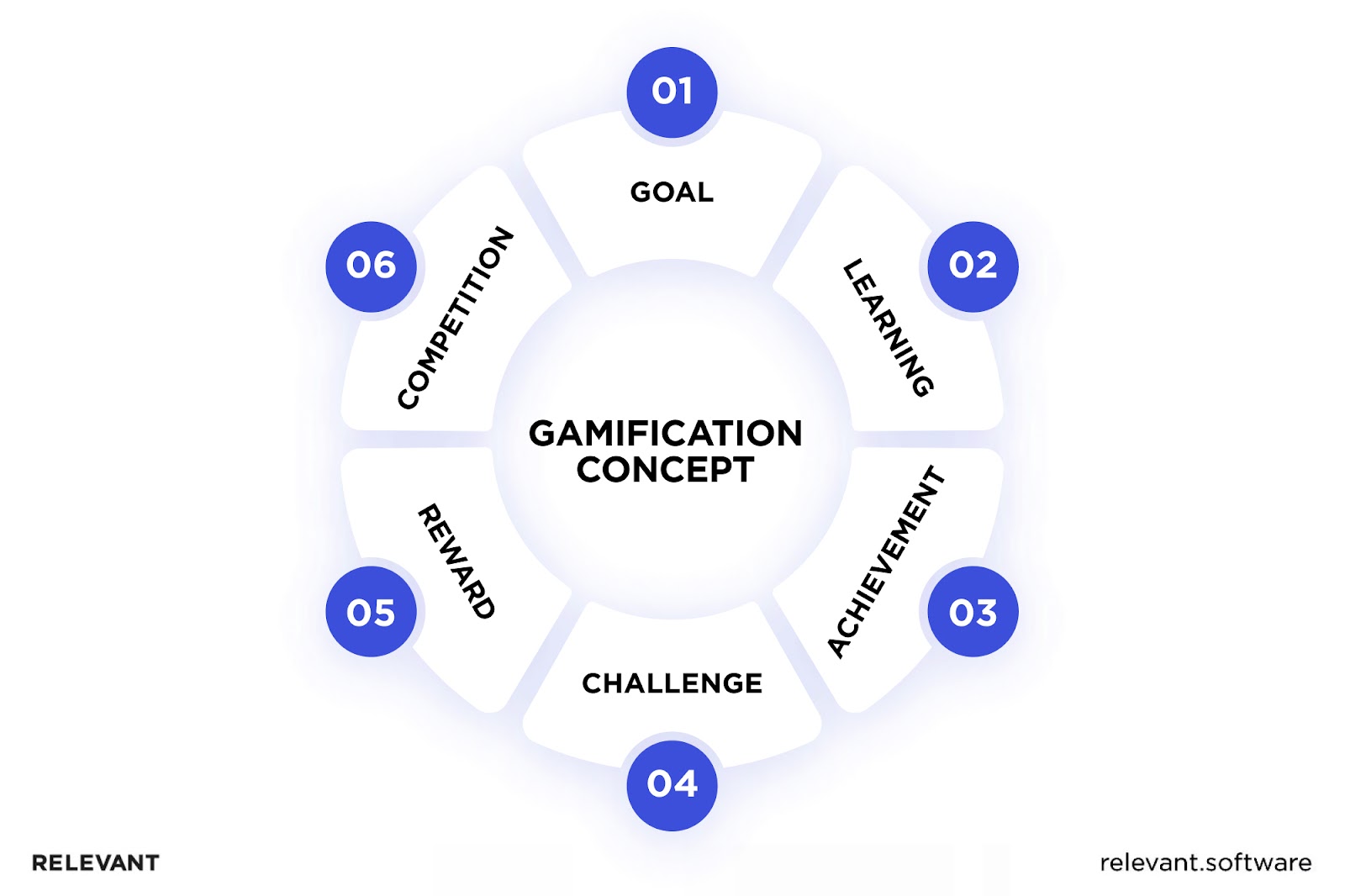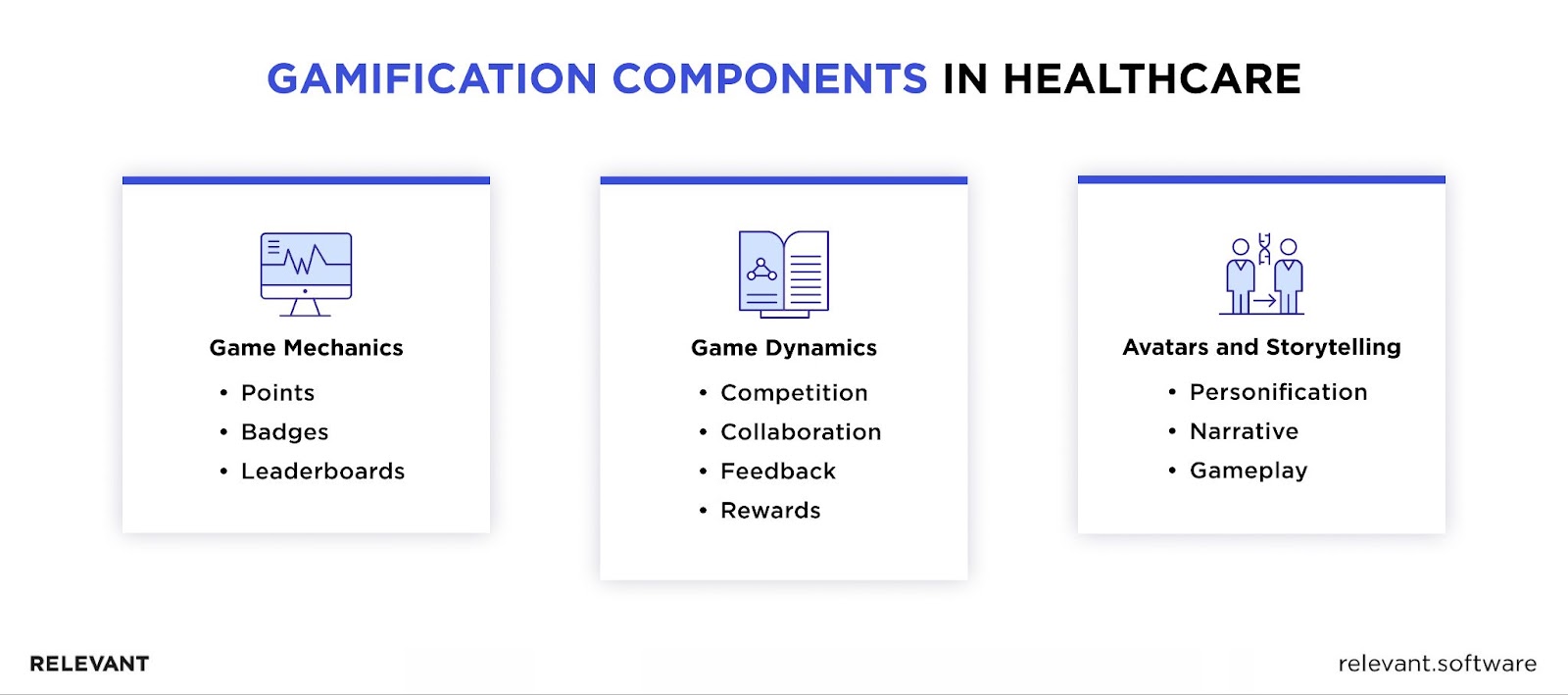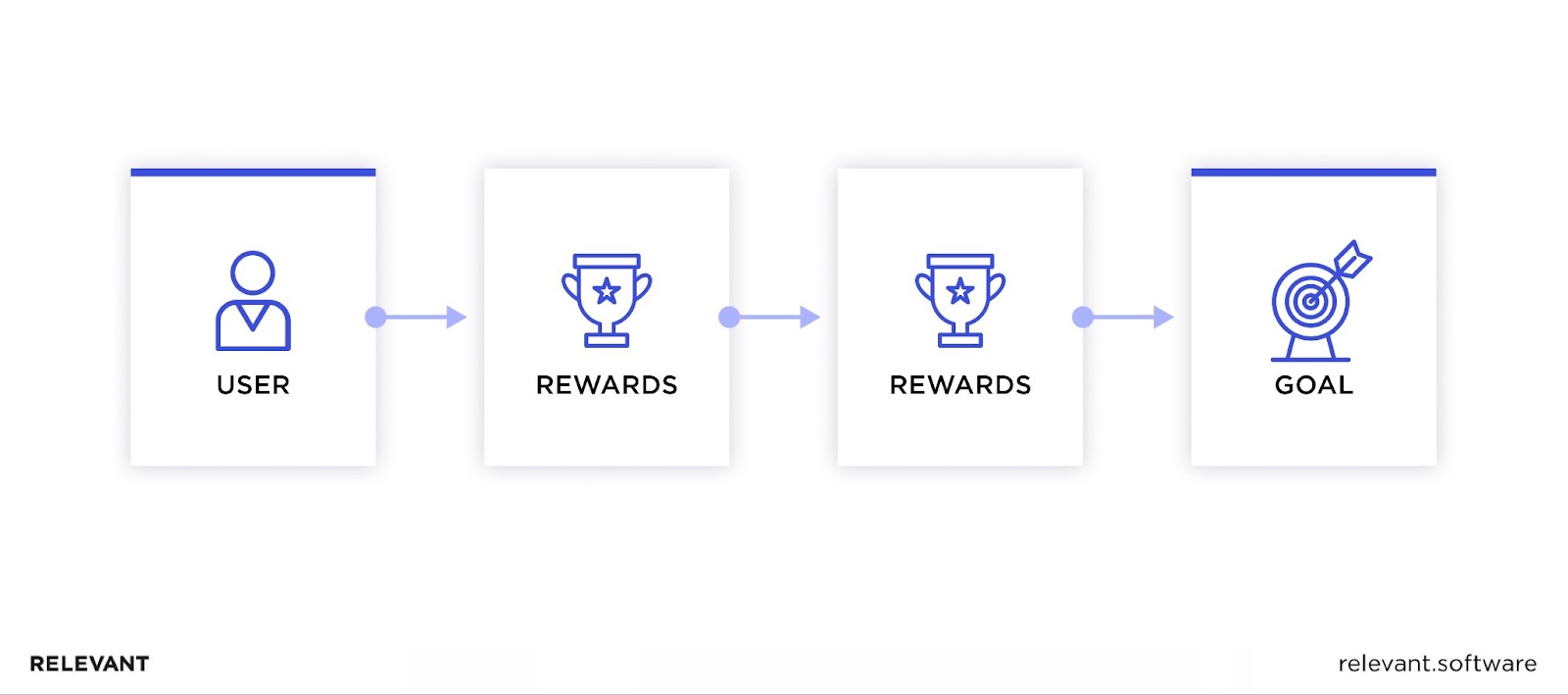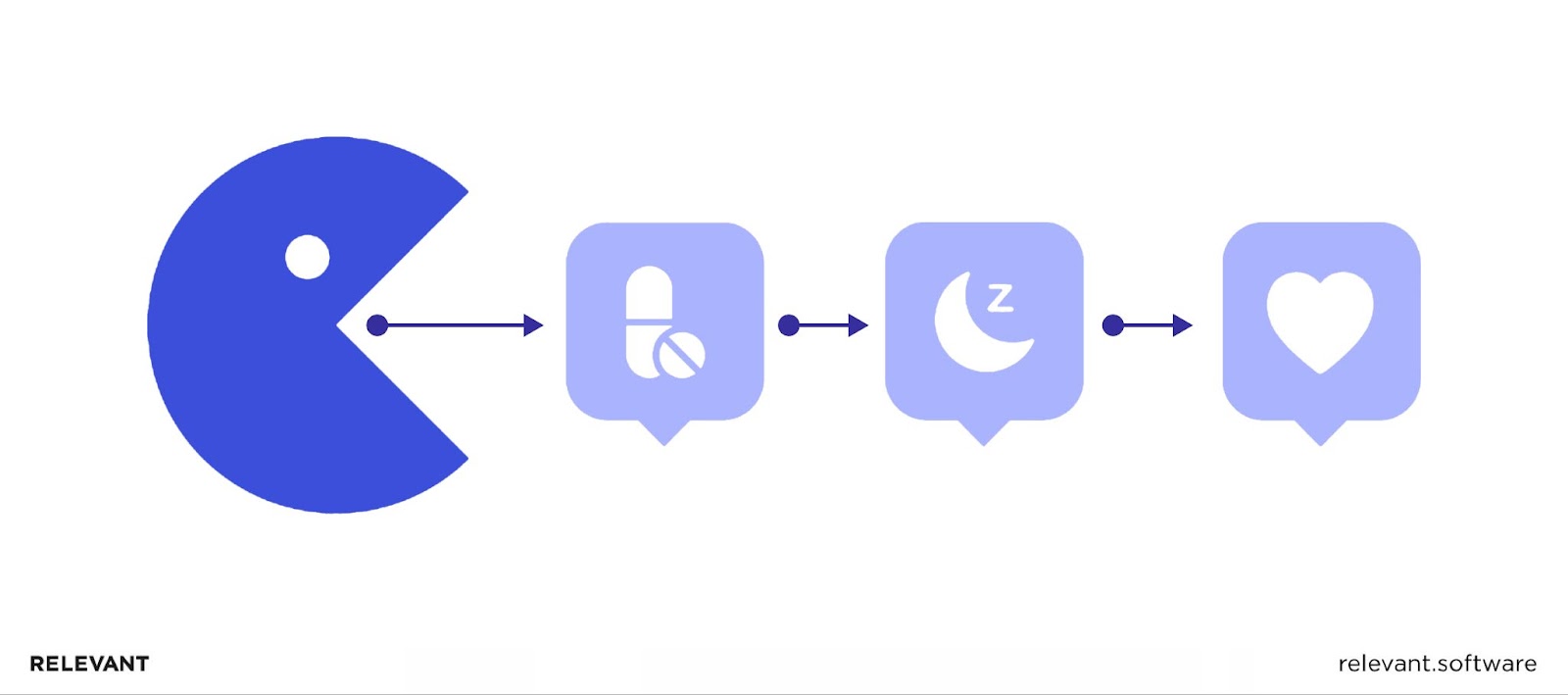Redefining Patient Engagement: The Impact of Gamification in Healthcare
Updated: June 4, 2025
Have you ever wondered why the “ding” on your health app announcing a new badge for reaching a health milestone brings such a rush? That little flutter of accomplishment and the curiosity to hit the next goal are no accident but the fruits of a clever strategy called gamification.
Gamification in healthcare is where the technology of coding meets the art of human psychology, incorporated into health app development. It’s the same strategy that has language learners hooked on apps like Duolingo, and it’s transforming the face of medical apps. Amidst a global health crisis, the medical industry has been challenged to adopt new healthcare technology trends, prompting innovative approaches like gamification to take center stage.

We provide companies with senior tech talent and product development expertise to build world-class software. Let's talk about how we can help you.
Contact usGamification holds the power to change health behaviors. When designed with a deep understanding of a target audience’s needs, gamification can become a powerful catalyst for health interventions, significantly boosting patient engagement. For businesses, the perks of gamifying healthcare apps are manifold – higher user retention, organic word-of-mouth promotion, and, most crucially, improved patient health and well-being outcomes. So, let’s explore them in detail.
Table of Contents
The Role of Gamification in Healthcare App Development
The concept of healthcare gamification embeds game-like elements into medical apps, transforming routine tasks into fun activities. This winning strategy is taking the world by storm, with the healthcare gamification market expected to hit $15.9 billion by 2030.

Why are games so irresistible? The magic lies in their innate ability to unlock intrinsic and extrinsic rewards that stimulate a sense of accomplishment and a thrill of enjoyment, making the climb to conquer challenges an exciting adventure.
Consider a diabetes management app. By incorporating gaming in healthcare software, users can gain badges or rewards for consistently checking their blood sugar levels. This keeps patients engaged and encourages them to take proactive care of their health, enhancing overall outcomes. It’s a win-win situation, with users racing towards their health goals and businesses witnessing higher patient involvement and a significant increase in revenue.
The role of gamification in the healthcare industry has sparked a revolution in healthcare services management. It makes it more user-friendly, injects a dose of fun, and, ultimately, ramps up its effectiveness. It’s a harmonious marriage of the thrill of gaming and the seriousness of healthcare. After all, if we can overcome challenges in games, why not approach our health goals with the same spirit and excitement?
Major Components of Gamification
With the healthcare gamification market size set to grow at a CAGR of 22.6% from 2023 to 2030, it will fundamentally reshape the landscape of medical app development. Below we highlight the major elements that make it so fascinating and form the foundation of a successful strategy for gaming in healthcare.

Game mechanics
These behind-the-scenes rules and rewards transform healthcare apps into engaging game-like experiences. They draw users in and inspire them to take an active role in their health journey. The key aspects are borrowed from traditional games, including:
- Points: Patients are awarded points for completing tasks, such as adhering to their daily medication schedule. This element plays on our natural inclination for achievement and progress.
- Badges: When patients collect enough points, they can exchange them for badges. These virtual trophies show off users’ progress and success and encourage them to continue on their health goals.
- Leaderboards: This is the game’s social side, where patients’ scores are ranked, stirring up a sense of healthy competition and community. The desire to move up the leaderboard will motivate your patients to make healthier choices more frequently.
Game dynamics
It determines the structure of user interaction and progression within the gamified app. Recognizing that not all people are motivated in the same way, game dynamics effectively cater to the individual motivations of the patients, including competition and collaboration, by adjusting the game mechanics. These emotional and psychological elements improve patient engagement and motivate them to stay committed to their health goals. Here are the main elements:
- Competition: Team challenges where everyone’s trying to outdo others in reaching health goals promote healthy competition. By triggering our inherent desire to win, this game dynamics element can enhance engagement and transform health management into a captivating journey.
- Collaboration: A gamified app focused on cooperative gameplay makes users work together to meet shared health objectives. Collaboration builds a sense of community and mutual support, especially among patients with the same diagnosis, making their healthcare journey less isolated.
- Feedback: Immediate feedback on patients’ actions can reinforce their healthy behaviors. For example, if a user records a week of regular exercise, instant feedback on their progress in the form of reward, achievement, or recommendation from a doctor can encourage them to maintain this healthy habit.
- Rewards: To give patients a sense of progression and achievement and inspire them to persist with their wellness objectives, healthcare apps offer certain rewards. These rewards also serve as personal milestones, encouraging users to continually push their health-focused goals to new heights.

Storytelling and avatars
These elements bring a fresh dimension to the gamification process in healthcare apps, fostering a more interactive and personalized user experience. They allow patients to form a unique identity, nurturing a stronger connection between them and their health objectives. Consider a fitness app that permits users to develop an avatar that evolves as they make healthier choices and reach milestones. Similarly, a narrative can intertwine these changes, turning the treatment process into an epic adventure. This enhances user engagement, making the health improvement process less clinical and more of an exciting, personal journey.
Benefits of Gamification in Healthcare
As digital health solutions evolve to become more patient-centric, gamification serves as a magnet for patient involvement, attracting more users and securing steady revenue in the long run. When you combine this with FHIR features, which enable smooth data transfer, you get health apps that foster a user-friendly and efficient healthcare environment. So, the gamification of healthcare brings profound benefits to patients and physicians alike:
Improved Patient Engagement
Healthcare gamification’s unique blend of competition, reward structures, and elements of curiosity and achievement inherently drives user engagement. Plus, gamification tools open avenues for effective app monetization. Furthermore, it can also contribute to clinical research efforts by reducing participant dropout rates, thus restraining the enormous costs associated with clinical trials.
Promotion of Healthy Behaviors
Gamification healthcare examples often use reward systems to incentivize positive health behaviors. Whether it’s diet tracking, medication adherence, or daily exercise, gamified tasks turn these mundane health routines into more appealing activities, contributing to overall patients health improvement. For instance, the SuperBetter app uses gamification to help people overcome various health challenges, such as anxiety or physical injuries. It offers users to undertake quests, collect power-ups, and battle bad guys, all representing specific health tasks or habits. Thus, it promotes resilience, a positive mindset, and healthy habits.
Education and Awareness
Health and wellness apps, enhanced with gamification, serve as engaging educators. They raise awareness about diseases and treatments by offering interactive quizzes and challenges. In this fun approach, you can equip your patients with the knowledge necessary to make informed health decisions.
Increased Adherence to Treatment
Gamification makes treatment plans fun and interactive, making them less of a chore and more of an intriguing quest. With ERP and a progress dashboard, patients get a real-time visual of how they stick to their treatment plan. This visual aid helps them identify areas for improvement, making it a powerful tool for sustained motivation. Plus, this data is a goldmine for healthcare professionals. They can monitor patient progress, adjust treatment plans if needed, and provide personalized feedback.
Data Collection and Monitoring
Gamification in healthcare apps not only adds a fun element to what can be a tedious journey but it also turns the user into a treasure trove of data. Every step taken, meal logged, delayed medication reminder, and even the progression of symptoms are recorded in real-time. Furthermore, it allows for proactive care – with access to data and implementation of Machine Learning, healthcare providers can spot potential issues early, tailor treatments, and deliver more personalized, effective care.
Stress Reduction
Transforming health management into a playful game can provide a much-needed breather from the usual stress and anxiety associated with health management. By aligning gamification strategies with evidence-based interventions, you can offer wellness apps as digital therapeutics, providing practical solutions for anxiety reduction, pain management, and more. The playful, interactive nature of gamified apps can make the healthcare journey less daunting and more manageable.
Gamification in Healthcare: Apps
Many modern healthcare apps offer patients the autonomy to manage their health conditions more effectively and provide comprehensive remote care solutions. However, as the landscape becomes more competitive, it’s crucial to go beyond merely offering functional services. That’s why numerous healthcare software development companies are adopting gamification strategies in creating diverse health solutions.

Fitness and Wellness Apps
Gamified fitness apps such as Zombie Run or Fitbit masterfully weave narratives and challenges into exercise routines. Imagine embarking on an exhilarating run to escape zombies or competing against friends to achieve step-count leadership. These game mechanics tap into our innate love for play, competition, and achievement, amplifying our motivation to stick with exercise regimens.
Wellness apps, on the other hand, go beyond physical fitness. They engage users in mental health exercises, stress management techniques, and healthy dietary habits. Consider apps like Headspace that leverage gamification to encourage mindfulness practice or apps like Habitica that transform your daily habits and tasks into fun, rewarding quests. By using badges and rewards, these apps cleverly encourage hunger in users to chase healthier habits. And with a visual progress dashboard tracker, users have a clear route to their health goals.
Chronic Disease Management Apps
The struggle of managing chronic diseases is real for both healthcare professionals and patients due to its ongoing nature and the need for lifestyle adjustments. That’s where gamification in healthcare comes into play to turn this burden into an engaging journey and help patients take a more active role in managing their health conditions.
Take, for example, the Mango Health app, which motivates patients with chronic conditions to stay on track with their medications. Every time users take their medication on schedule, they earn points, much like leveling up in a game. These points can then be exchanged for real-world rewards. With this kind of motivation, sticking to your medication schedule becomes less of a chore and more of an exciting goal to hit.
Another example, MySugr, a diabetes management app, incorporates gamification by transforming daily diabetes management tasks into engaging challenges. By logging their blood sugar levels, users “tame their monster” – a fun representation of managing their condition. Leaderboards, feedback, and rewards add to a user-friendly experience that instills in the patient a sense of control and a positive attitude.
Implementing such gamification ideas for healthcare apps for chronic disease management holds immense potential for improving patient engagement and health outcomes.
Mental Health and Mindfulness Apps
The interplay between gamification and healthcare has allowed developers to create captivating digital environments perfect for supporting mental well-being, mindfulness, and managing stress.
Take Headspace, for example. They were among the first to apply the gamified approach to mindfulness. With their app, meditation becomes a rewarding journey – the more you meditate, the more levels and tracks you unlock. This sense of progress and achievement motivates people to keep practicing, underpinning the benefits of gamification in healthcare.
Now let’s take an example of Happify. This app’s mission is to combat stress and negative thoughts using games and activities developed based on science to foster positive vibes and resilience. Here, gaming serves a double duty – making mental healthcare more enjoyable and reducing the stigma around it.
Medication Adherence Apps
When integrating gamification in healthcare apps, software engineers create an innovative approach that’s all about the patient, offering an engaging and rewarding user experience that takes digital health solutions to the next level.
Take a look at MyTherapy. This app does more than just ping you with reminders to take your meds. It gives you badges for consistently taking your medication on time, congratulating and encouraging you to maintain the medication routine.
Then there’s Mango Health. This app goes further and gives you points when you take your medicine as prescribed. You can then swap these points for real-world prizes just for taking your medication. This concept of ‘earning’ tangible benefits is a powerful way to motivate patients to stick to their treatment plans.
Rehabilitation and Physical Therapy Apps
Equipped with interactive features and real-time feedback mechanisms, rehabilitation and physical therapy applications transform the often daunting task of physical recovery into engaging activities, ensuring optimal results. Moreover, these apps significantly expand the scope of healthcare delivery, reaching patients wherever they are and reducing the need for frequent, time-consuming hospital visits.
Consider Physiofun, a series of apps specifically designed to gamify physical therapy exercises for patients recovering from strokes. Through engaging, interactive games where patients’ movements—captured via a motion-sensing device—direct gameplay, Physiofun seamlessly transforms prescribed physical exercises into an immersive journey toward recovery.
Equally revolutionary is Reflexion Health’s Virtual Exercise Rehabilitation Assistant (VERA). This cutting-edge platform uses gamification techniques to enhance patient engagement in physical therapy regimens from the comfort of their homes. The platform offers animated avatars that instruct each exercise and provide patients with real-time performance feedback.
These apps reveal the groundbreaking impact of gamification tools in physical rehabilitation, drastically enriching the patient experience and driving better health outcomes.
Patient Engagement and Education Apps
These apps use engaging, interactive strategies to encourage patients to actively participate in their healthcare journey, fostering a better understanding of their health conditions and promoting proactive behavior.
Gamification transforms the often complex and daunting information into digestible, engaging content. Interactive quizzes, challenges, and rewards systems encourage patients to learn about their health and navigate care pathways. For example, an app may offer points or badges for reading educational material or successfully managing a health parameter, instilling a sense of achievement and motivating further learning and engagement.
Not only does this increase user retention, but it also empowers patients with knowledge, leading to improved decision-making regarding their health. This education can lead to better self-management and preventative care, potentially reducing the burden on healthcare systems.

Neurological Disorders Apps
Given the nature of neurological conditions, they often necessitate ongoing management, cognitive rehabilitation, and continuous monitoring. Gamification in these apps injects an engaging, interactive, and immersive approach that revolutionizes how patients manage their conditions.
From memory-boosting games for Alzheimer’s patients to coordination-enhancing tasks for those with Parkinson’s, these wellness apps harness gamified strategies to provide beneficial exercises in an entertaining and engaging format. Including game dynamics such as scores, levels, and rewards offers positive reinforcement and motivates users to continue their exercises, enhancing therapeutic outcomes.
Simultaneously, gamification aids in the thorough monitoring of progress in neurological conditions. The data collected from these interactive tasks provide insights into cognitive functionality, physical ability, and overall progress. This data can be invaluable for healthcare providers in adjusting treatment plans, thereby delivering a more personalized, patient-centric approach.
The Role of User Experience (UX) in Gamified Healthcare Apps
The user experience (UX) is the heart and soul of gamified healthcare and wellness apps. It ensures that the incorporation of game mechanics is not just an afterthought but a fundamental component intertwined into the fabric of the app. The UX design navigates the delicate balance between creating an entertaining environment and maintaining the core aim of promoting health outcomes. And with the growing prevalence of healthcare gamification, a seamless, intuitive, and immersive UX is a big trend in app design.
Deloitte’s study shows that poor design can spell disaster, with 80% of game-like apps failing because of inadequate design. It’s a stark reminder of the importance of getting UX design right. With expert UI/UX design services, you can build a compelling UX that amplifies user engagement. It’s all about creating an intuitive journey enriched with game elements that align with the user’s natural preferences, making the usage of the app enjoyable and effortless.
A well-designed UX caters to the users’ diverse needs, goals, and limitations, promoting accessibility and inclusivity. Beyond aesthetics and functionality, UX enhances the benefits of gamification in healthcare, encouraging continuous engagement, motivating behavioral change, and facilitating user retention.
Ethical Considerations and Risks in Gamifying Healthcare
In the pursuit of designing gamified healthcare apps, it’s crucial to pay due attention to some challenges that may arise along the way. Ethical implications and potential risks are the aspects that require thorough consideration and a strong focus to build engaging and reliable medical digital solutions.
Motivation vs. manipulation
Gamification, by design, plays on the basic human desire for achievement, progression, and social connection. It is crucial to understand that while these game mechanics effectively encourage positive health behaviors, they also carry the risk of manipulating users’ actions.
For instance, an app might prompt users to achieve more steps per day, but these goals must be set ethically, taking into account each individual’s health condition and capabilities. Setting sky-high goals might lead to stress, doing more harm than good. So, the objective should be motivation, not manipulation. A responsible approach to gamification respects users’ autonomy and transparently communicates the purposes and methods of gamification.
Data privacy and security concerns
As with any technology that collects and analyzes personal data, privacy and security issues are at the forefront of ethical considerations in healthcare apps. Patients often share sensitive health data, making it vital for app developers to employ stringent data protection measures. Safeguarding patient data entails anonymization, the use of robust encryption methods, the integration of FHIR standards, and complete transparency about data usage and storage. Compliance with privacy regulations such as HIPAA in the U.S. and GDPR in Europe, along with corresponding global laws, is also an absolute must. Data privacy and security are crucial aspects of ethical design, contributing to the trustworthiness and credibility of your healthcare app.
Careful attention to these ethical considerations and risks can ensure that this gamification approach to healthcare is used responsibly and effectively.
Key Takeaways
As we delve deeper into the 21st century, the intersection of gamification and healthcare in the future will continue to evolve as it promises transformative potential. This powerful blend can drive patient engagement, foster healthy behaviors, enhance treatment adherence, and provide valuable data insights, ultimately paving the way for a more dynamic, efficient, and patient-centric healthcare landscape.
However, as with all digital innovations, navigating this path with a deep sense of responsibility is paramount. Striking a balance between motivational mechanics and ethical implications, alongside stringent data privacy and security measures, is crucial in defining the success of gamified healthcare apps.
To that end, consulting with an experienced healthcare software development company can make all the difference. Relevant Software, a trusted provider of healthcare IT consulting services, designs and develops secure and user-friendly healthcare apps that meet your specific needs. Keeping our fingers on the pulse of gamification trends and medical software development, we can guide your journey toward creating ground-breaking digital solutions that will stand the test of time and empower your patients to take control of their health.
FAQ
Our core services:
Do you want a price estimate for your project?
Do you know that we helped 200+ companies build web/mobile apps and scale dev teams?
Let's talk about your engineering needs.
Write to us











